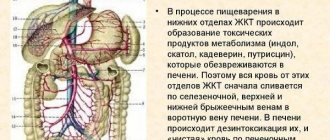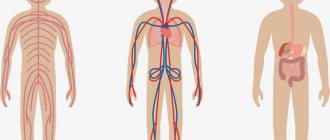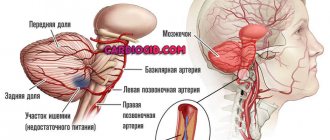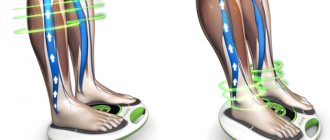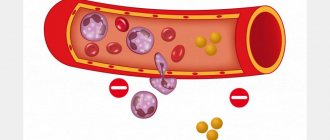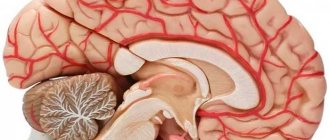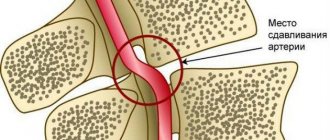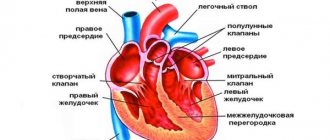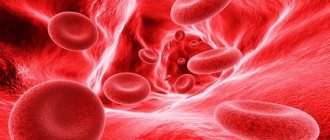In modern medicine, blood tests can be performed by specially designed computers, which provide more accurate results. The WBC blood test is no exception. The question immediately arises: what is the WBC? This is the level of leukocytes in the blood, their quality and viability. Previously, the analysis was carried out by laboratory workers and calculated manually, now the work of laboratory assistants is simpler, the analysis results are issued quickly, but the printout is not so easy to understand.
The WBC value in a blood test is the total number of leukocytes. This value makes it possible to diagnose infectious and inflammatory processes, indicates the formation of blood cancer, decreased immunity, and allergic reactions occurring in the human body. When monitoring the indicator, the effectiveness of the prescribed treatment and the level of bone marrow performance are determined.
WBC indicator
An increased number is called leukocytosis, a decreased number is called leukopenia.
Leukocyte cells are necessary for the human body because they are protectors. Several types of leukocyte cells have been identified:
- The first detect foreign cellular microorganisms.
- The latter disseminate information.
- Still others fight foreign microorganisms and eliminate the danger that has arisen - this phenomenon is called phagocytosis.
Important! Not all leukocyte cells are considered phagocytes and destroy pathogens.
When conducting a biochemical blood test, WBC decoding makes it possible to determine the number of white cells; the information obtained determines the presence of inflammation and indicates where the lesion is located.
There are five types of leukocytes; for the most accurate information, the number of each group is determined, thanks to this the cause of the emerging pathologies is clarified:
- Neutrophils - perform the main protective function; their number should be greater than other leukocyte cells. When an infection enters the body, they first begin phagocytosis. When foreign bodies dissolve, they disintegrate on their own. Mature cells begin the initial fight, but if a dangerous infection forms, young neutrophils also join.
- Basophils are large blood cells, of which there are normally a small number, their function is to react to allergic substances that affect the body. The cells contain granules with different substances. When exposed to an allergen, substances are released and capture the allergen. They send a signal to all cells, causing activity.
- Eosinophils belong to the group of granulocytes, since they contain granules with potent substances that develop activity when an infection enters the body.
- Monocytes are immature cells that destroy foreign bodies. The presence of these cells is observed in lymph nodes and tissues.
- Lymphocytes – their function is to activate the protective barrier during the development of infection.
Leukocytes: everything you need to know about blood cells
Leukocytes have a lot of physiological properties; they recognize signals from other blood cells and are able to be activated at any time to protect the immune system. White blood cells move through the general bloodstream, reaching the site of damage. They trigger phagocytosis - this is the process of absorption and digestion of foreign agents, and their complete removal from the body.
Normally, the number of leukocytes in the blood is:
- for newborns – from 7 to 32×109 U/l;
- for children – from 6 to 13.5×109 U/l
- for men – from 4 to 9×109 U/l;
- for women - from 3.9 to 8.5 × 109 U/l.
Changes in the level of white blood cells indicate the development of pathological processes in the body. Under their influence, leukocytes are unable to perform their basic functions:
- protective;
- restorative (regenerative);
- regulatory
The protective function is based on the destruction of pathogenic microorganisms by absorbing and digesting them.
The regenerative function is to accelerate the process of restoration of the affected area of the body.
The regulatory function is the formation and release of special components, cytokines. They are responsible for the timely response of the immune system and directing all its forces to eliminate pathogenic agents.
Age indicators and norms
In a biochemical blood test, WBC is determined by the number of all leukocytes and each group separately. The normal level directly depends on the age category of the patient and the condition of the body.
In adults, the norm ranges from 4 to 9*109 per liter.
In the blood of an infant - a maximum of 12.5 * 109 per liter.
Attention! In children under two years of age, a higher level is often observed; the number of leukocytes in WBC analysis reaches adult values at approximately 15 years of age.
The ratio of all types of leukocyte cells:
- Neutrophils – at least 60%.
- Eosinophils – up to 1.5%.
- Lymphocytes – at least 20%.
- Monocytes – more than 4%.
- Basophils - approximately 1% of the total, their absence is also considered normal.
The table below shows the WBC blood test (interpretation, normal for women):
| Index | Norm for women |
| Red blood cells (RBC) | 3.7-4.7Х10(12) – for women |
| Hemoglobin (HGB) | 120-140 g/l |
| Hematocrit (HCT) | 36-42% |
| Mean erythrocyte volume (MCV) | 81-99 microns cubed |
| Average hemoglobin level in erythrocytes (MSH) | 27-31 pg |
A general blood test (WBC) is done in a laboratory on an empty stomach; the patient must follow the following rules:
- Do not eat for at least 10 hours. Drink still water.
- Do not drink alcoholic beverages 2-3 days before a biochemical blood test.
- Avoid emotional stress.
- Avoid significant physical exertion and vigorous sports activities.
Important! During pregnancy and before the onset of menstruation, women may experience slight deviations from the norm.
Before testing for normal indicators, you should not eat too fatty foods, as this makes the blood serum cloudy and complicates the study.
Signs of cerebral infarction
The disease is an acute disturbance of cerebral blood supply (ischemic stroke) followed by the development of signs of a neurological disease that persist for up to a day. In transient ischemic attacks, the patient:
- temporarily loses vision;
- loses sensation in any half of the body;
- feels stiffness in the movements of the arms and/or legs.
Symptoms of vertebrobasilar insufficiency
Ischemic stroke of the brain localized in the vertebrobasilar region is perhaps the most common cause of disability in people under 60 years of age. Symptoms of the disease differ and depend on the location of the disorder in the main vascular functions. If blood circulation has been disrupted in the vertebrobasilar circulation, the patient develops the following characteristic symptoms:
- dizziness of a systemic nature (the patient feels as if everything around him is collapsing);
- chaotic movement of the eyeballs or its restriction (in severe cases, complete immobility of the eyes occurs and strabismus develops);
- deterioration of coordination;
- tremor while performing any actions (trembling limbs);
- paralysis of the body or its individual parts;
- nystagmus of the eyeballs;
- loss of sensitivity in the body (usually occurs in one half - left, right, bottom or top);
- sudden loss of consciousness;
- irregular breathing, significant pauses between inhalations/exhalations.
Reasons for the increase
If the level of leukocytes is elevated, then the following factors become the causes:
- Infectious diseases (smallpox, influenza).
- Herpes.
- Tuberculosis.
- Blood cancer.
- Rubella, whooping cough.
- Hepatitis is an inflammatory process in the liver.
- Mononucleosis is a viral disease that affects the pharynx and lymph nodes.
- Taking certain medications (Dilantin, Mephenytoin).
- Blood transfusion.
If at least one of these factors is present in the blood test, the level of lymphocytes is elevated, treatment is necessary to eliminate the cause.
Leukemia and leukocytosis: fundamental difference
Leukemia is a blood cell disorder that results in excessive production of white blood cells.
Their number is constantly increasing until the appropriate medicinal effect is exerted on the body. In medical practice, elevated white blood cells indicate blood cancer. The pathological process progresses in childhood and in the elderly. Experts are studying the development of leukemia, but not a single modern study has made it possible to identify the true causes of the pathology.
Causes of reduced lymphocyte levels
If the level of lymphocytes is low (less than 15%), then this is provoked by the following factors:
- Aplastic anemia is a bone marrow pathology.
- AIDS.
- Rapidly developing neoplasms.
- Adrenal hyperactivity.
- Pathologies of the nervous system.
- Sclerosis.
- Myasthenia gravis is an autoimmune disease that causes muscle weakness due to disruptions in neuromuscular transmission.
- Guillain-Barré syndrome is the human immune system that destroys its own cells – neurons.
- Taking medications from the steroid group.
What is vertebrobasilar insufficiency
The arteries of the spine emerge from the subclavian vessels located in the upper part of the sternum cavity and pass through the openings of the transverse processes of the vertebrae of the neck. Then the branches go through the cranial cavity, where they unite into one basilar artery. It is localized in the lower part of the brain stem and provides blood supply to the cerebellum and occipital region of both hemispheres. Vertebro-basilar syndrome is a condition characterized by a reduction in blood flow in the vertebral and basilar vessels.
The pathology is a reversible disorder of brain function, which occurred as a result of a decrease in blood supply to the area supplied by the main artery and vertebral vessels. According to ICD 10, the disease is called “vertebrobasilar insufficiency syndrome” and, depending on concomitant disorders, may have code P82 or H81. Since the manifestations of VBI can be different, the clinical symptoms are similar to other diseases; due to the complexity of diagnosing the pathology, the doctor often makes a diagnosis without proper justification.
Indications
A biochemical blood test is necessary in the following cases:
- The presence of infectious and inflammatory processes.
- High body temperature.
- Fever, fever.
- Bone pain.
- Migraine.
Similar studies are carried out in the treatment of diseases to determine the effectiveness of treatment (inflammatory and infectious processes, immune diseases). Sometimes deviations from the norm are observed, which means the presence of disturbances in the human body.
Children have higher rates than men and women, so comparisons are not worthwhile.
Treatment of cerebral ischemia
The most severe lesions in ischemic stroke that occurs in the vetebro-basilar system are injuries to the brain stem, since it contains vital centers - respiratory, thermoregulatory, and others. Disruption of the blood supply to this area leads to respiratory paralysis, collapse and other life-threatening consequences. Ischemic stroke in the vetebro-basilar region is treated by restoring impaired cerebral circulation and eliminating inflammatory foci.
Brain stroke is a disease that is treated by a neurologist in a hospital setting. For therapeutic purposes in ischemic stroke of the vertebrobasilar region, a drug method is used. During the treatment period, the following drugs are used:
- vasodilators to relieve spasms (nicotinic acid, Pentoxifylline);
- angioprotectors that stimulate cerebral circulation and metabolism (Nimodipine, Bilobil);
- antiplatelet agents to prevent thrombosis (Aspirin, Dipyridamole);
- nootropics to activate brain activity (Piracetam, Cerebosin).
Drug treatment of ischemic stroke that occurred in the vertebrobasilar region lasts for 2 years. In addition, surgical treatment of the disease can be used. Surgical intervention for vertebrobasilar syndrome is indicated for the third degree of ischemic disease, if conservative treatment does not produce the expected effect.
According to ongoing research, severe consequences of ischemic stroke occurring in the vertebrosbasilar region occur in two cases. This occurs if treatment was not started in a timely manner or did not produce results in the later stages of the disease. In this case, a negative outcome of vertebrobasilar insufficiency can be:
- mental retardation;
- isolation;
- asociality;
- learning difficulty;
- migraine.
First aid for stroke
If you observe symptoms of an ischemic stroke in a person, call an ambulance immediately. Describe your symptoms to the dispatcher as accurately as possible so that a neurological team will arrive when called. Next, provide the patient with first aid:
- Help the person lie down. At the same time, turn it on its side and place any wide container under the lower jaw in case of vomiting.
- Measure your blood pressure. With an ischemic stroke that occurred in the vertebrobasilar region, the pressure is usually increased (approximately 180/110).
- Give the patient an antihypertensive drug (Corinfar, Captopril, others). In this case, it is better to put 1 tablet under the tongue - this way the remedy will act faster.
- Give the person with suspected ischemic stroke 2 diuretic tablets. This will help relieve brain swelling.
- To improve the patient’s brain metabolism, give him a nootropic, for example, Glycine.
- After the ambulance team arrives, tell the doctor exactly what medications and in what dosage you gave to the patient with an ischemic stroke.
Decoding
The WBC leukocyte test is a common test to determine the condition of the body and human health. Often the patient needs to visit a hematologist to determine blood diseases.
A general blood test takes into account the level of red blood cells (RBC), hemoglobin and hematocrit. If the overall indicator is low, then this indicates anemia, which provokes weakening of the patient’s body. In this case, there is a lack of iron and vitamin deficiency. If the levels are exceeded, polycythemia (increased number of erythrocytes (red blood cells) in the blood) or heart failure may develop.
Symptoms of sudden cardiac death (SCD)
- Sharp weakness
- Dizziness
- Loss of consciousness, possible appearance of tonic contractions of skeletal muscles, noisy breathing
After 2.5–3 minutes. breathing stops completely. It should be remembered that after about 3 minutes. from the moment of onset of ventricular fibrillation or asystole, irreversible changes occur in the cells of the cerebral cortex. It is precisely in connection with such sudden changes in SCD that it is necessary to establish a diagnosis in a timely manner and carry out a number of preventive measures (prescription of pharmacological drugs, endovascular treatment, interventional treatment in the scope of implantation of a cardioverter-defibrillator).

